Homesteading skills for kids teach responsibility, patience, and problem-solving, which can enhance confidence and self-sufficiency.
These practical life skills can be age-appropriate and fun while fostering a connection with nature and the environment, creating a solid foundation at an early age.
So, if you live with your children at homestead, this post will help you teach the valuable homesteading know how.
[This blog post is only for educational purposes and does not intend others to follow it necessarily. Any stunts and acts instructed for children in the post are prohibited without the guidance and protection of adults or parents.]
1. Growing Plants at Basics
When I was a kid, I would tour our backyard garden with my dad, especially when it was picking time. You can also make it happen to your children.
Also, help your kids plant seeds in the ground or in a container.
They cannot sprinkle or plant the seeds at the desired amount in position, so you need to show them first or teach them by holding their hands.
Besides, tell them about the different growth stages of plants, such as germination, seedling, vegetation, flowering, and fruiting.
You may also want to teach them how to water the plants with hose or watering can. You can assign them a potted plant explaining how much and how often to water.
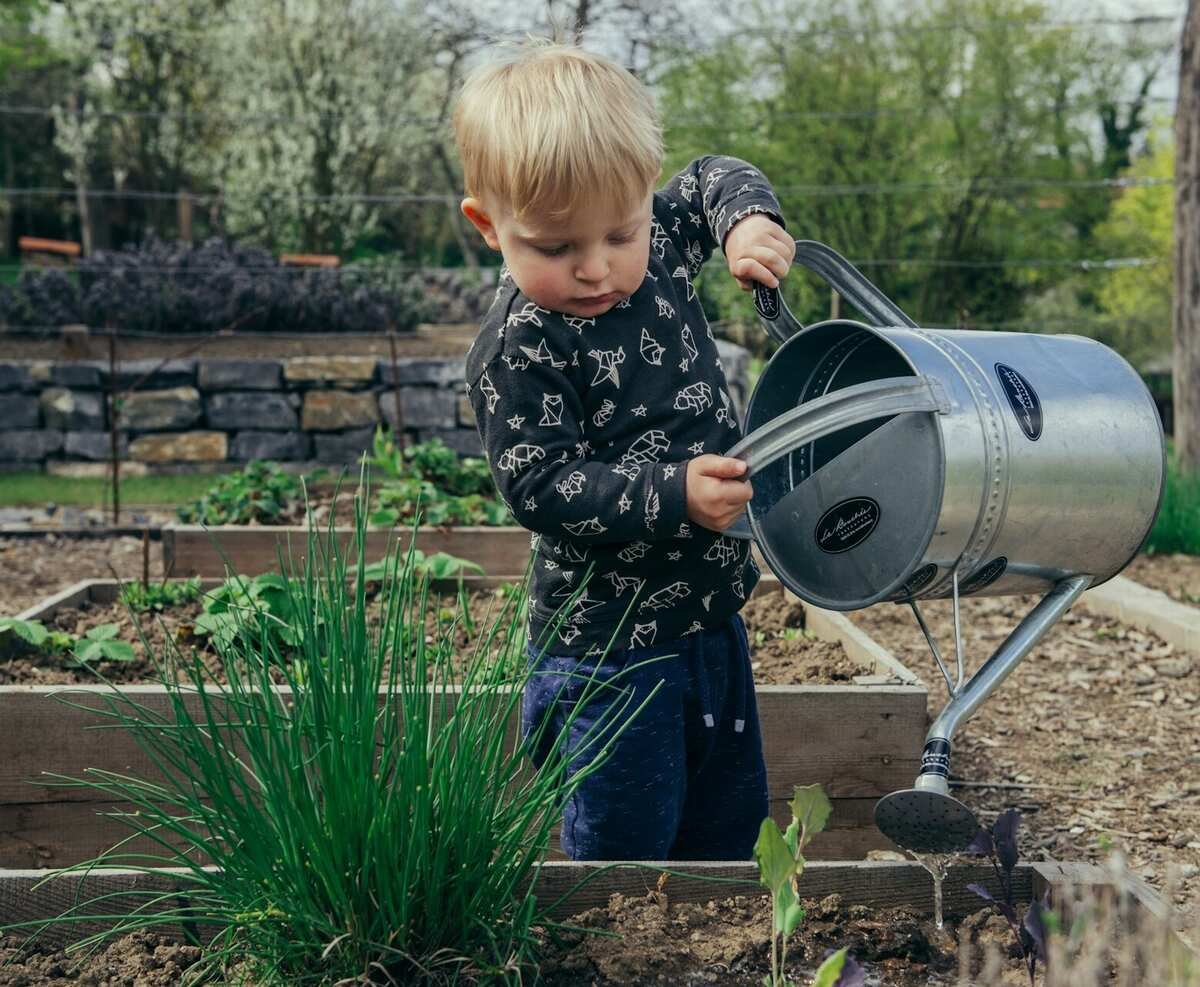
Your kids will throw their toys if you allow them to harvest the ripe vegetables in the garden.
Tell them when and how to pick the vegetables and fruits off the plant. After this experience, your kids won’t ask if the vegetables grow in the supermarket.
2. Weeding and Maintaining a Garden
Kids need to identify weeds and beneficial plants.
Explain to them how unwanted weeds can hinder the growth of garden plants. You can uproot the unwanted plants first and show the children.
Allow your child to dig a few areas of land and remove the weeds safely.
When handling the spade or other tools, make sure that your kids won’t hurt themselves. 😀
3. Feeding Chickens and Collecting Eggs
Since childhood, I have enjoyed raising chickens for meat and eggs. This is one of my favorite homesteading skills for kids.
It will be joyful experience for your kids to tour the coop or poltry farm. You can ask them to mix the homemade chicken food and feed the chickens.
You can remind the children to feed the birds in the morning and late afternoon.
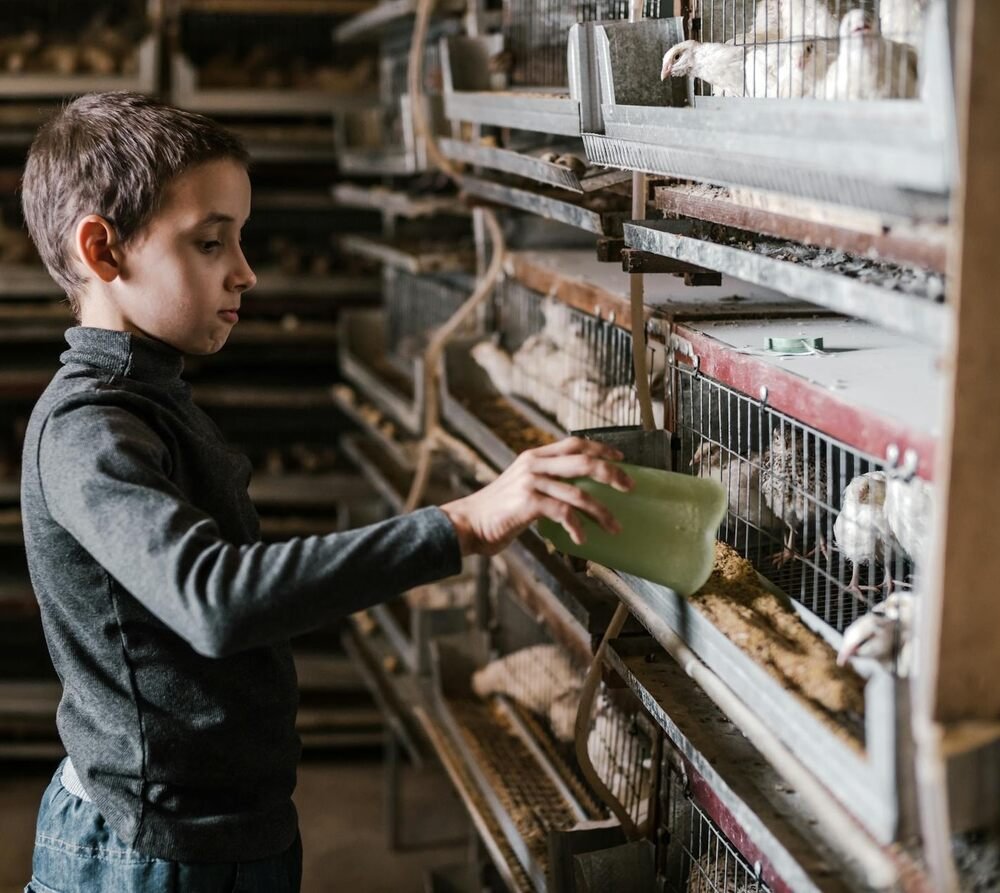
After food, let them to pour water in the channels or containers. Also, tell your children the breed name of the chickens and help them weigh the chickens.
Don’t allow your kids to butcher the chickens at an early age, as they can hurt themselves with sharp objects.
However, you can summon your kids to gather eggs from the chicken house without breaking. This may help them paint the eggs on Easter safely.
If your children are old enough, teach them about the chick-hatching process and egg selling.
4. Milking and Taking Care of Animals
Urban kids may wonder where the milk in the bottle comes from. So, you need to teach how to milk goats and cows.
Start off with the goats as kinds can access them easily. And don’t let your children go near if the cows or buffalos are aggressive. But they can handle it once they grow older.
Taking care of animals helps in this, as those who cater to animals feel loved.
While doing this, consider small animals like rabbits, guinea pigs, or goats for kids.
So, ask your children to feed the animals in the barn and refill and clean the water trough. Besides, you can teach them to brush animals’ coats and clean sleeping quarters.
5. Candle and Soap Making
Include your children in the projects whenever you do DIY activities like making candles and soaps.
This will boost their creativity in making daily essentials from raw materials. First, tell your kids about the required materials and the whole process.
When continuing the making, you can ask them to collect the tools and arrange them. Then, show them how to chop the soap base and melt it, and let them repeat.
It is okay for kids to put the soap base in the oven, but don’t force them to handle the hot pot of soap base.

When you finish, pour the mix into the mold, and it sits well; allow children to de-mold the final product.
Likewise, you can let your kids experience cutting beeswax, adding essential oils and scents, and setting the wick in the melted wax to make a candle.
6. Making Simple Recipes
Learning easy recipes helps children prepare and eat when they feel hungry and their parents are away.
You can start by showing them the essential kitchen utensils and how to handle them. Then, instruct them on basic cooking skills like washing vegetables, chopping, grinding, and mixing.
Let your kids try simple recipes like homemade butter, bread, or jams.
It will be really fun for them to make simple dishes and share the food with the family members. Unlike eating nasty foods at restaurants, it can be their healthy eating and living base.
7. Canning and Preserving
After harvest, my grandmother often brought me to our pantry to show her real treasure.
There, I helped her clean glass jars, cut the peppers and carrots, and put them in the jars. You can also teach your children the basics of food preservation and understanding seasonal produce.
You can tell them about common veggies such as cauliflower, cabbage, and beets and when they are produced.
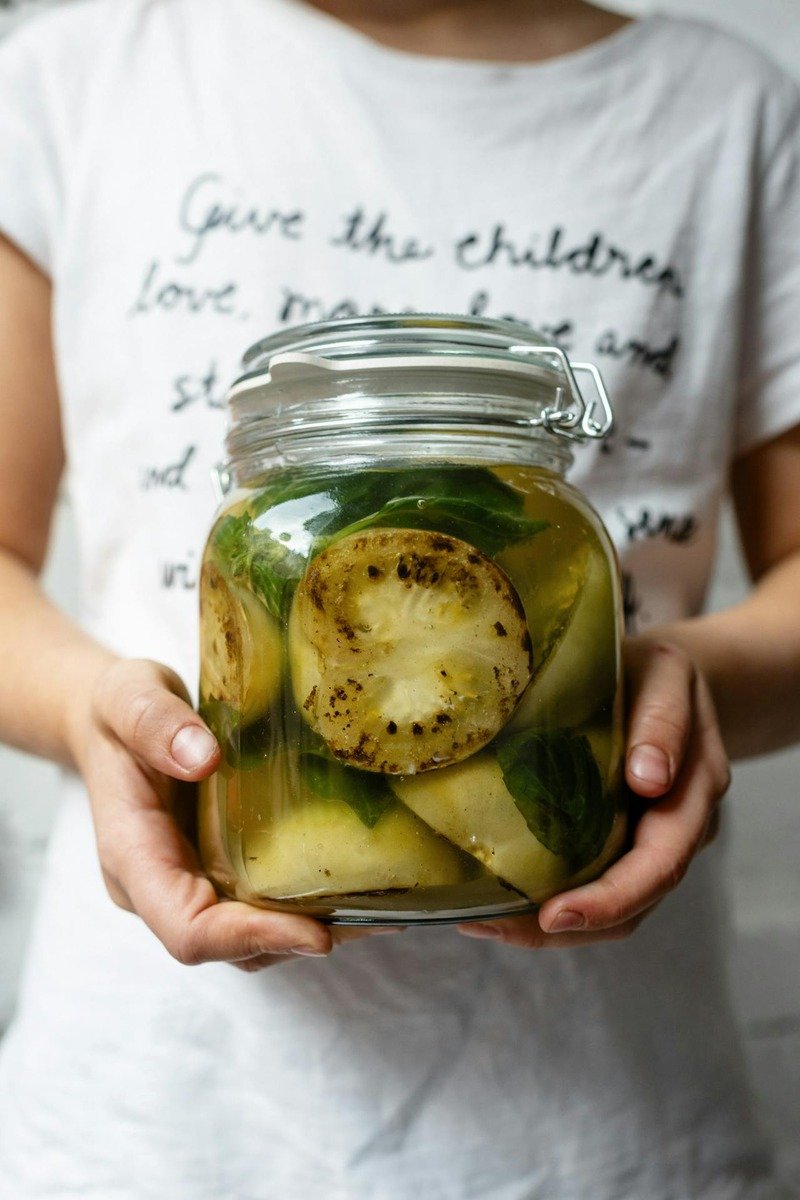
Also, share some storing and preserving methods such as keeping in refrigerator, canning, freezing, and pickling.
8. Recycling and Waste Management
You will also want to tell your children to manage waste and make a homestead hygienic and clean. You can teach them the basics of recycling or upcycling and how we can make the waste reusable again.
For example, you can let children use old pallets to make garden planters, storage solutions, or any piece of furniture under your guidance.
Also, teach them the different types of waste and how to categorize them based on decomposing or non-decomposing.
In addition to plastics, allow the kids to collect cans, old tools, and scrap metal using gloves and mark them for the recycling center.
You can also tell many ways to reduce waste at home and encourage creativity in repurposing household items for new uses.
9. Basic Woodworking Skills
Apart from hacking the woods, let your children learn basic woodworking skills such as gluing, sanding, and setting up wooden pieces.
You can teach all these basic homesteading skills and only allow kids to do the light work. Inspect if they are old enough to handle the furniture tools.
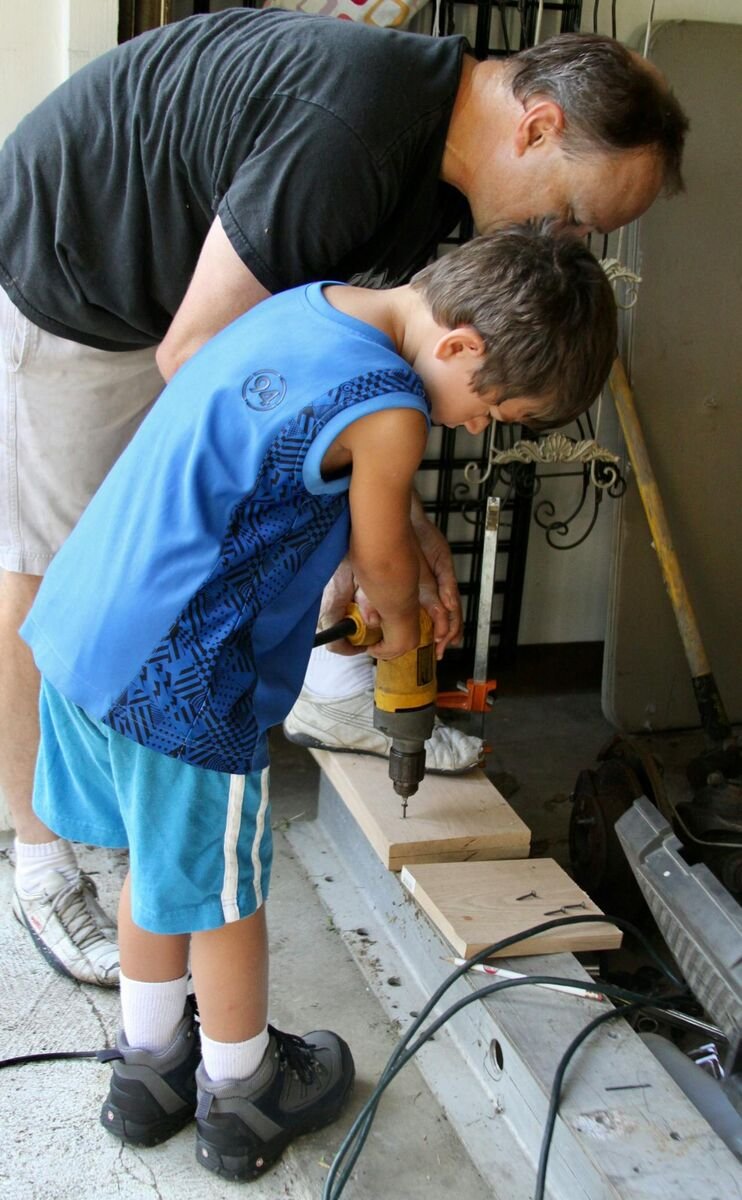
Children 5 or above can start with measuring & marking, oiling, and painting.
It is also okay for them to create small projects, such as benches or plant boxes, using safe tools.
10. Building Birdhouses or Bee Hotels
Birdhouses and bee hotels can attract helpful wildlife that can make your surroundings lively and pollinate your garden plants for good produce.
And they are simple woodworking projects that children can complete.
To build a birdhouse, you can cut the pieces of plywood in a measured length for kids and ask them to attach the pieces with a screw.
Guide them with separate parts, including the ventilation and stand, and let them complete.
Allow children to place the birdhouse 12-18 feet above the ground near the garden.
Besides, your kids can try building bee hotels by making small paper tubes, drilling wood or bamboo, and finally constructing a roof and a pair of stands.
11. Repairing Fences or Small Structures
Kids have keen eyes to check if the fences are broken and need repair.
Whether it is an animal house net or your land boundary fence, they can be a wonderful assistant to supervise and mend.
It can also be a lesson for them about animal and human safety. They will be eager to learn how deer, rabbits, jackals, and other invaders destroy fences and crops.
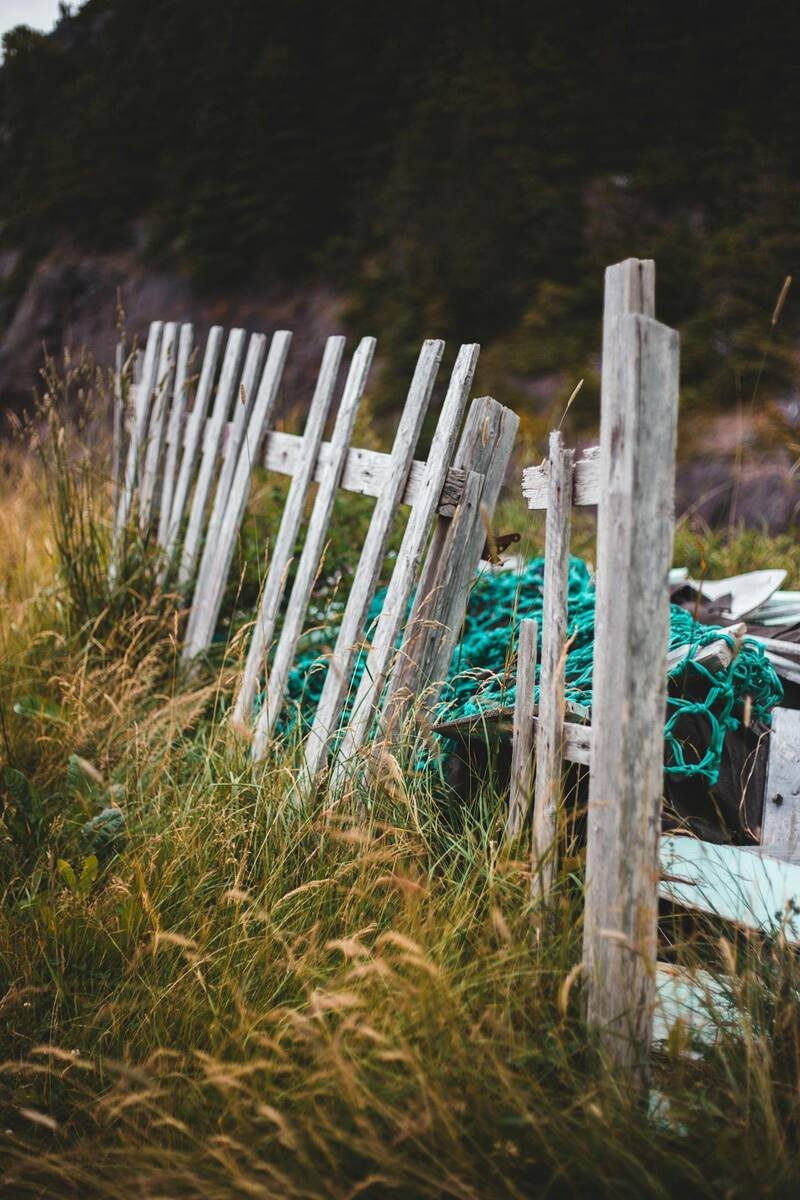
So, let the children spot the repairable location and show them how you can fix it with some maintenance skills.
You can assign them to fill the void space with a net and wooden pieces under your adult supervision.
If they are 10 or above, you can let them repair small structures like chicken coops or animal feeding troughs, making homesteading skills one level higher for kids.
12. Identifying Edible Plants
While hunting foods in the forest or wilderness, it is vital to recognize the edible plants and fruits and understand wild foods.
This forage skill helps children avoid toxicity when they roam in the wild. You can show edible berries and greens such as raspberries, mulberries, dandelion, clover, and chicory.
Also, tell them to remain away from poisonous plants such as holly berries, poison oak, poison ivy, and poison hemlock.
You can also tell the characteristics of toxic plants, having milky sap, fine hairs and spines, waxy leaves, and umbrella-shaped flowers.
13. Making Herbal Remedies
First, you need to name some herbal plants found in the garden, such as aloe vera, peppermint, garlic, rosemary, sage, and basil.
Also, tell your children about the health benefits of these herbs.
They are always lively but can get cold, bug bites, or small cuts during their play, so it is your homesteading duty to teach kids the skills for finding natural remedies.

Under the guardian’s guidance, you can instruct them to make simple teas or salves from common herbs like chamomile or lavender.
14. Composting
It is everyone’s duty to save the fertility of the earth, so teaching children at an early age can have a deep impact on their experience of responsibility.
So, you can teach them how composting works and turn waste into nutrient-rich soil.
For this, allow the children to collect the required materials, such as kitchen food waste or biodegradable waste, farming forks, and a spade.
Show them how to layer the wastes one after another, asking them to sprinkle the water. Also, tour a place when the compost is ready after a few weeks.
15. Basic First Aid
It is crucial for every child to know simple first aid skills like cleaning cuts or applying bandages.
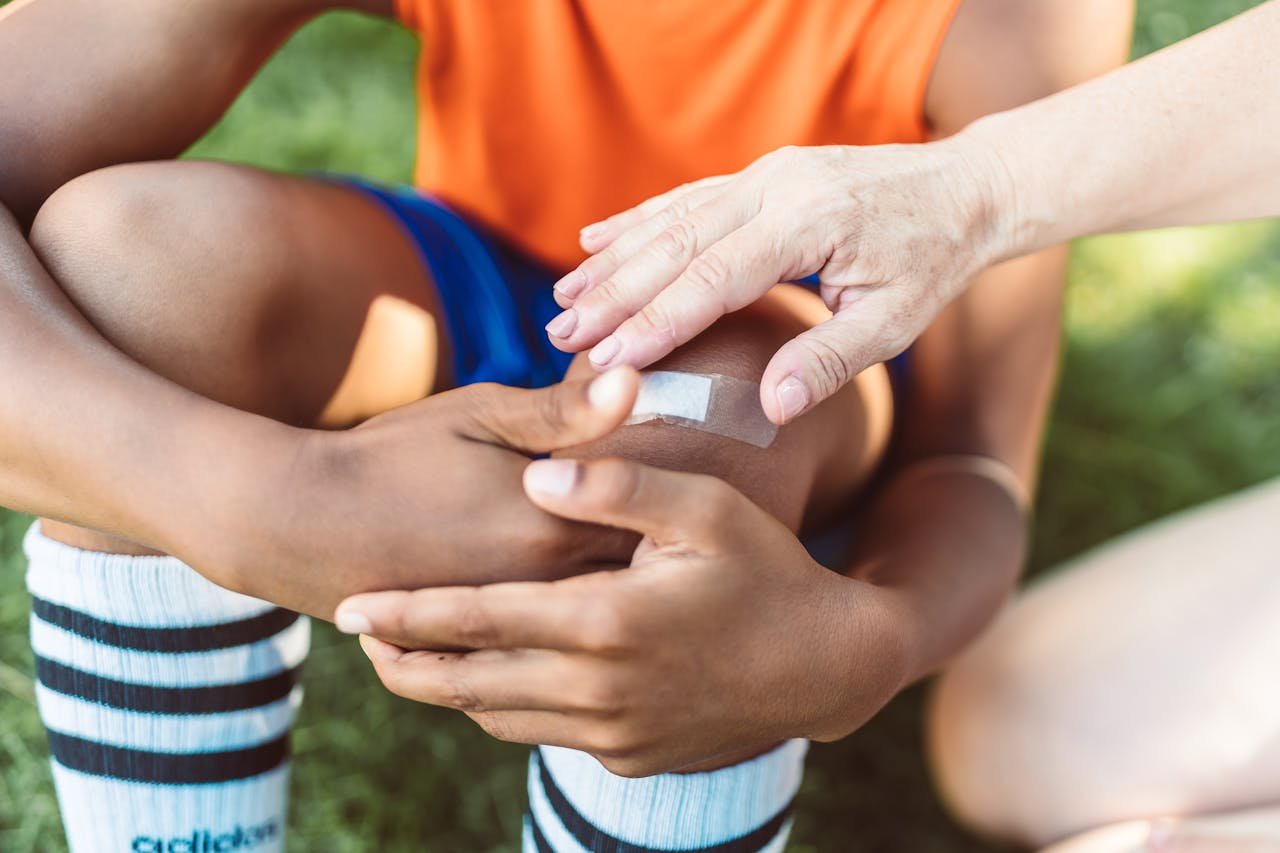
You can also teach how to treat a burn and nosebleed and do CPR. After these skills, they can be safer about their health and help those in need.
Children aged 12 or above can perform CPR.
Inform them about the home address and to dial 000 for a health emergency.
16. Fire Safety and Fire Building
Whether it is accidental fire caught in the homestead or wildfire, both can destroy the surroundings and living beings.
So, everyone, including children, needs to learn fire safety rules. You can tell them to use a fire extinguisher or splash water.
Besides, help them recognize combustible materials such as paper, clothing, dry trash, and flammable liquids, including gasoline, paint, solvents, and propane, and tell them to remain fire away.
Under your supervision, you can teach fire-building basics.
17. Using and Basic-repairing Tools Safely
You can also introduce child-friendly tools like small hammers, screwdrivers, etc.
Homesteads often need repair whenever the weather becomes extreme, or due to old age, so operating basic tools can be very helpful.
When I was a young child, I yelled, “rightie tightie, leftie loosie,” while repairing the roofs and walls.
So, you can take your children to the repair place and help them learn some basics.
18. Doing Laundry and Clothes Care
No need to mention but if your kids have yet to learn doing laundry tasks as homesteading skills, it is the right time.
They can start washing their clothes with their hands and dry them under the sun. After that, you can teach them to fold and organize clothes responsibly.

Share some cloth-caring tips, such as avoiding ironing and storing the clothes in a cool and dry environment.
19. Sewing and Mending Clothes
After laundering skills, your children may feel interested in learning the basics of sewing, buttons, hemming, and simple mending.
Whenever I had a tear in my T-shirt or half-pants, I would sew the torn part before I realized my mischief in childhood. 😜
Start telling kids how to stitch and darn the ripped clothes.
You can also ask your children to wear sustainable clothes made of bamboo or pure cotton, explaining the benefits for their health and nature.
20. Household Cleaning
This is one of the first lessons all children need to learn, starting with cleaning their own room.
Teach them how to organize toys and how to make a clean bed. Once they learn to do simple cleaning tasks early, they will carry them out throughout their lives.
You can assign them to sweep and mop the floor, clean the window panes, and wash the dishwasher.

It is wise to schedule the cleaning tasks daily and weekly for children, but not for child labor.
21. Water Conservation
Like any other resource, water must be conserved and used responsibly.
Your children also need to learn this and save water for gardening and animal husbandry. Tell them about water conservation methods such as rainwater harvesting, irrigation scheduling, and the reuse of wastewater.
They can learn many methods from everyday life at the homestead.
Final Thoughts
Teaching homesteading skills to kids helps them grow independent and live their lives on their own.
As parents, you can ad adjust activities or the skill set based on child age and ability. Remember not to force them.
Children aged 3-4 can start watering the plants and feeding chickens. As they grow older, you can assign complex skills.





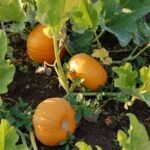


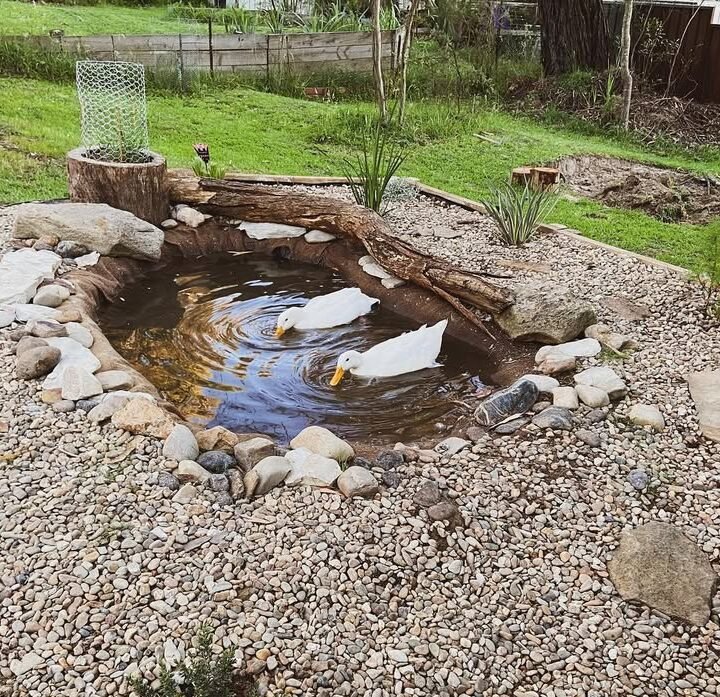

Leave a Reply